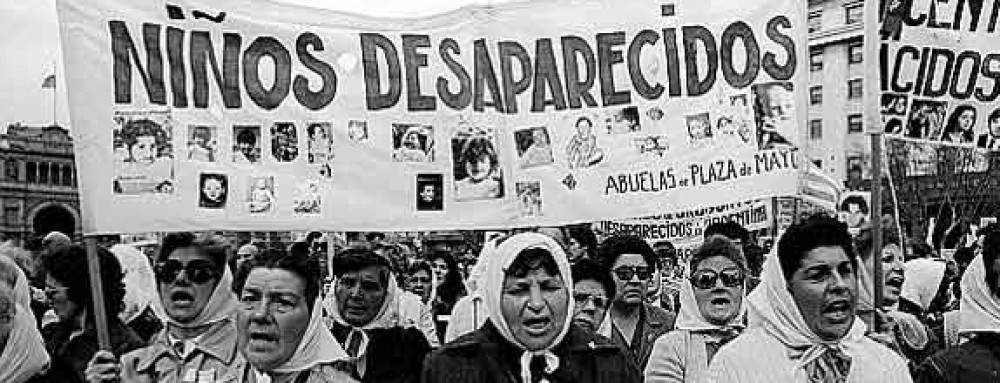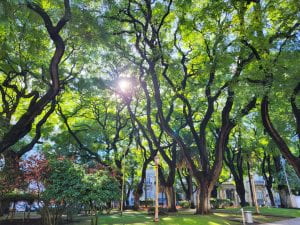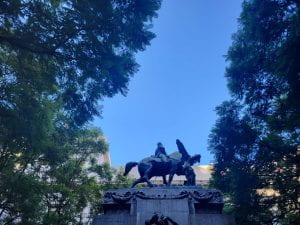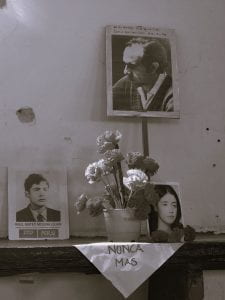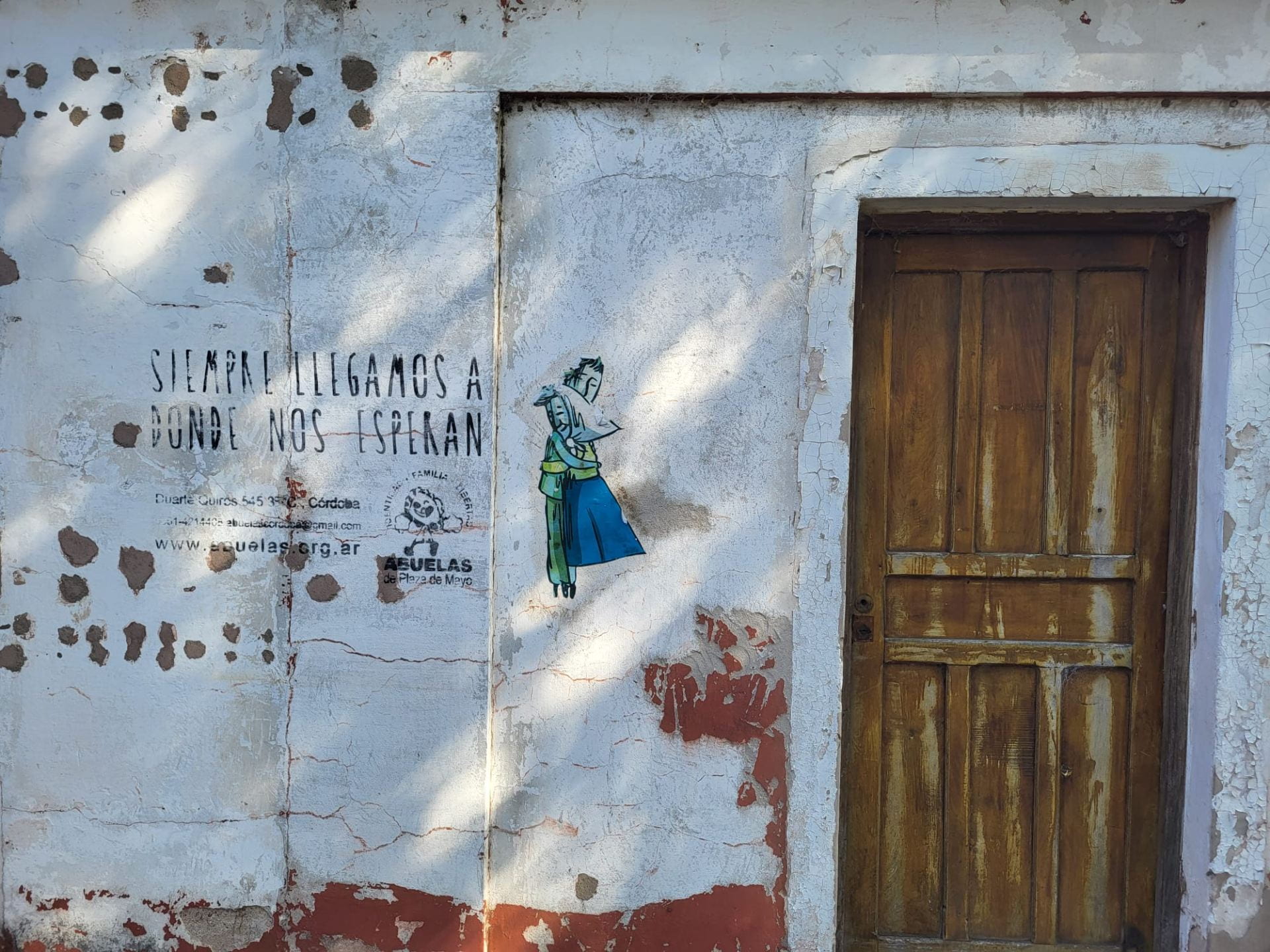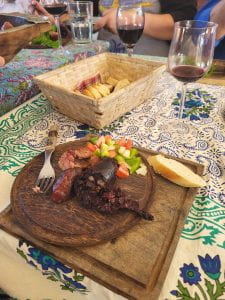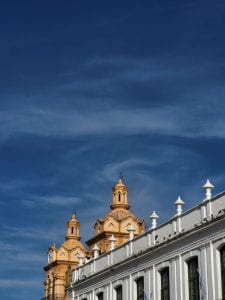Ghadi nkteb hadchi bdarji 7it khasni nmars bha chwiya ila bghit nrj3 l ifriqiya chi nhar. Sra7tan ana modgdg bzaf b3d ma salit m3 had l programme lakn fr7an — 7it t3ltm bzaf hena. Had lbled mokhtalif tmaman 3la lmaghrib w mrikanz, lakn bayen bzaf f nfs lwoqt. Mashakl dyal nass, rishwa, wasta, kolchi kayna — 7ta shekl d l3rouba hena b7al lli kayn f chmal lmaghrib. Kan bghit ndir chi 7aja bdarija 100% wlakn makanch lwoqt. Kolyom kont lmtrjm dyal programme hhhh. Iwa hadchi lli 3ta Allah. Mazal kanfkr f sa7bi, J LR, fach kanqra f chi bled akhr. Allah yer7mo. Alhamdollilah 3la kol l7al.
Author Archives: dhenderson33
To the next who looks for answers
Hola lamngen. Espero que estes bien, contente y feliz.
This is not an easy place to be. The worst of the US has happened, is still happening, or is starting to happen here for the most part. These lands are scarred by hatred and treachery, and have been covered in beautiful churches, palaces, and offices to distract you from that truth. The original inhabitants of these lands are very much still with us — Kamiare, Mapuche, Wichi, Chane, countless more — despite what your tour guides would have you believe.
These cities, Cordoba and Buenos Aires, have histories which extend incomprehensibly beyond when the Iberians invaded in the 1500s. The “conquerors” were not the first to make cities, and weren’t infallible heroes who were masters of their “craft”. In fact, the first one got what was coming to him pretty quickly and they had to get his boy from Spain to finish the job when they made the capital.
Despite what people tell you, it’s not acceptable to call Indigenous people “Indians” or Afrodescendent people “Blacks” — and whatever story they tell you to justify it is also unacceptable. These streets, buildings, waterways, all of this infrastructure and beauty that has become the pride of this nation would not have been possible without enslaving Africans and Indigenous people. These houses of worship, lined with gold and silver and ornate wood carvings, could only be built using enslaved labor and stolen materials.
You will walk into these memory sites and feel the heaviness that chokes the air and you with it. I ask you to do the same as you walk through the old city, through the cathedrals, the estancias, the ranches, and the palaces. Recall their histories just as you would for a recent site, because they still inflict the same traumas as they did 500 years ago. The only difference is that they’d never wrap a sitio de memoria in goldleaf.
No matter how good your intentions are or how well you speak English and Spanish, being a cultural mediator will become tiring. You will find yourself apologizing for the actions of others, perhaps because their intentions were lost in translation (or, really weren’t). You will become so tired that by the time you just need to speak for yourself to buy water, you won’t even be able to form the basic sentence. Often, those who ask for the most of you will give you the least thanks in return. These are pretty universal things, but they’re good to keep in mind specifically here.
This is a nation of beautiful people, cultures, and vistas that will take your breath away even on a tough day. You will likely have some of the most meaningful moments of your life here; little minutes that feel like hours, expressing something that an entire library would struggle to do — without words. I am enamored with just how much I have to learn and know about this place, and I’m so excited to come back under different circumstances.
If you come here looking for answers to questions like the ones I had, then I am certain you will find them. The journey is anything but easy, but I leave this country with a kind of heavy enlightenment about myself and our own country. Be kind to yourself, set healthy boundaries, rest, and don’t be afraid to try new things. Do be afraid of the street chori, though.
Also, bring hot sauce and your own spices. One bottle is not enough. And be familiar with the general plotline of Forrest Gump, at least toward the end of the movie. It becomes relevant here, you’ll see (mille grazie, profe).
Suerte,
D.
Estados culiados
“Fucked-up states”
Dr. Mary R. Harvey notes the following in Sources and Expression of Resilience in Trauma Survivors:
“Violence, abuse, tragedy, and catastrophe know no national boundaries. Indeed, they make themselves at home in nations, cultures, homes, and communities throughout the globe.”
Seems like one of those “no shit” kinda things at first, but really take a second to think about how terms like “genocide” and “ethnic violence” carry connotation in your head. What places and people come to mind? It’s going to be different for everyone; you might think Rwanda, I think Palestine, Bill thinks Sudan, etc.
Point is, you and I will be hard pressed to find estadounidenses whose first association with these terms is with the United States and other North American states. Between 400 years of slavery, genocide, invasion, developing the framework of concentration camps, and inhumane imprisonment, the US really should be everyone’s first, at least second answer.
Despite this, we’ve been enculturated through US media (manipulated by the state/oligarchy) to perceive our conditions as anything other than indicative of genocide. We came here to Argentina learning about how the repressors used euphemisms for things like torture and execution, but what about ours?
Here are some truly US euphemisms, with some translations I’ve provided. I think I get to say at this point I’m pretty alright at translating, cause I’ve been doing it the entire time:
- “Trail of Tears” – a death march against Indigenous Americans already weakened from invasion, plague, and treachery, which forced them and their descendents to live on reservations,
- “Reservation” – an open-air prison,
- “Forfeiture of one’s 13th Amendment rights” – forcibly enslaving someone,
- “Punishable by fine” – you can get away with it if you’re rich and white,
- “Died after police believed they saw a firearm” – murdered by an occupying military force with absolute impunity.
The list can go as long as we want it to, because this is a state and cultural entity obsessed with whitewashing. Why do you think we don’t have nationally-effective unions? Can we name a single unified student political front — and for the love of the Good Lord, don’t say the Young Democrats — that is able to effect change? Why is the US so different from Argentina, and why are the people who grow up buying into the US so different from those who don’t?
THE UNITED STATES IS A PRISON. It is a machine designed to create generation after generation of apathetic and complacent citizens, accepting the divine authority of the state before anything else. Sick? It’s your fault, pay for it. Arrested? Your fault, should have known better. House seized by the state with no compensation? Your fault again, should have paid for a better lawyer.
THE UNITED STATES IS A MONSTER. It feeds off of your blood, sweat, and tears and demands more until you’re dead and can’t say no anymore. It draws diasporas with hopes of an “American Dream” which will never come: it’s the bulb in front of the anglerfish — the only one who gets to benefit from the trick is the one doing the trick. You’ll spend your whole life’s savings trying to stay afloat here. Meanwhile your money is just going to line the pockets of some rich fuck in Hell’s Kitchen, who’s gonna spend your rent on blow and sashimi tonight.
One of my classmates on this program asked “if [I] hate America so much, if it’s so bad, then why do [I] even live there?”. We could unpack that a lot, but after these weeks here I’m gonna start charging for emotional labor by the minute — for now, let’s just keep it at that. We all know what that sentence leads to, and I thought it was pretty funny considering we’re abroad and not too far from “my country:.
To respond: something I stole from some anti-Charlie Kirk meme I saw a while ago.
“You hate feudalism? Yet you toil the lord’s land. Curious.”
To sum up this post, these countries are all damned from the start. We, as estadounidenses, just find ourselves on a different, more progressed branch of imperialism/capitalism. Is there hope? I hope so! Did I learn here? Of course! Was it worth it to come here? Absolutely. Was it easy? Fuck no. Does the constant cycle of micro/MACROaggressions, interpreting, undercooked meat, and big walks take a toll on your health? Yes, next time I’ll bring more vitamin C and DayQuil.
ALHAMDULLILAH IN ANY CASE
On Buenos Aires, Argentina, and Abya Yala
Buenos Aires, Argentina
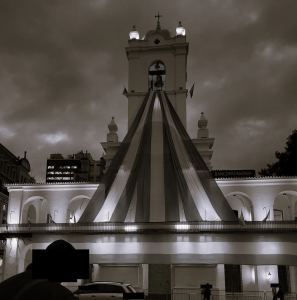
[I’m not posting this for credit; I just wanted to share with everyone else my thoughts. If you’re reading this, thanks for taking the time for looking.]
I wake up with dark red marks carved into my inner palms, carved by my fingernails as I clench my fists during my sleep. These days, I find myself at odds with the clock: no matter how many more hours of sleep I get, it feels as if I haven’t slept at all. I don’t really remember the dreams I’ve been having, but I get brief images of running, hiding, and loud noises. They aren’t exactly new — my fair share of run-ins with other fun things have brought me to similar bouts of restlessness.
Osvaldo helped reveal truths to me that were previously obscured by (what now seem like) the thinnest of barriers. All of the signs and explanations were there, but I think I unfortunately rely too heavily on the “it’s only true if someone else validates it” model — leaving me to moments like this if I’d like to do any big soul-searching without the help of our fungi-based tools. These times at the memory-sites, I’ve found, are compartmentalized in this part of my mind that’s recently formed. I think it truly began when I first visited an ICE detention center in south Georgia — and has been more recently defined by my trip to New York City. What a radicalizing experience! The most prominent displays of wealth and luxury juxtaposed by the most poor people experiencing houselessness — not to say Atlanta is any different, but it’s the scale.
I find much of the same here. The crescent-shaped marks sting as I hold my toothbrush, pack my bag, and hook my silver around my neck as I get ready in the morning. Towering buildings, which easily mirror those on Fifth Avenue, condescend over “popular”, working-class neighborhoods. The universal news-stingers reflect skyrocketing inflation, parroted by the fascist taxi-drivers who unwittingly take us from one memory-site to another. The sound of drums and brass fill the pedestrian streets as green and yellow smoke rises over the crowd. Cold rain unforgivingly lets down over thousands gathered to bear witness to their political futures, while peddlers frantically put out their stocks of ponchos and umbrellas.
The sounds of the pipes and AC in this hotel take turns sounding like screams of pain and loud knocks at our door. Twice now, the little turn-timer on the microwave has gone off without cause as I’ve been alone in the dark. The window looks out to a family’s room; I can see and hear them in the mornings, worrying me as if they were in the room. To put it plainly: this place gives me the fucking creeps.
Buenos Aires has its own terrible beauty as any other major Latin American city would, but with its own flavor. Think Mexico City — built directly upon the ruinous city of Tenochtitlan, ransacked and violated by barbaric Spanish invaders. Hey, but at least there’s a public conception of “original” or “Indigenous” culture in Mexico City. Buenos Aires is a grand monument whose brilliance allures you to come closer and join: only when you’re close do you realize its made of bleached bones, not marble.
I don’t deny the beauty of this place in the slightest. In a continent renowned for its xenophobia, there is a vibrant and (partially) integrated community of immigrants who make this a badass place to be. We’ve been eating Korean, Vietnamese, Brazilian, and Peruvian food these nights. I really couldn’t ask for more, considering most of my nights in Cordoba were spent eating some version of a ham and cheese sandwich or pizza. Still sticking with ham and cheese, though.
I recall the conversation I had with Carlos, who was one of the musicians and poet who came to the asado during our last bits in Cordoba (specifically around Cerro Azul). This is a country, continent even, of millions with connections to land and her original peoples in some form or another. The difference is whether or not they make an effort to learn about these histories and realities, and to decolonize their minds. It is a lifelong process like anything else, but immensely important.
I have no intention to soapbox to my fellow “mestize” (mixed-race) Latin Americans about how they need to join me on this journey of decolonization, et cetera — because if they truly want to do it, they will. I don’t intend to bring someone in on this discourse, these spaces, these paths if they lack the basic respect for the essence of decolonization: that these lands are colonized, that our ancestors are still with us, that our siblings are still here, and that hope is not lost.
I have learned that there is nothing to be gained from trying to engage with those who make your identity a question — something ostensibly up for debate. They are the collaborators to our repressors, the devil’s advocates who will put you in danger for the sake of preserving the “marketplace of ideas”, the informants whose allegiances to the state come before whatever conception of humanity you two have. These are times for joy and for love and for gathering, but we do so in strength and in careful advisement. We have no choice but to prepare.
memento mori
Inertia, memory, and cognizance
I walked out of an exhibit room from where our group was, letting our guide Matias know that I’d be finding some place outside to sit and write my thoughts out. I nod through the kind-intentioned but ever-frequent “mire, este habla castellano” remark as I head through the doorway. The individual conversations of our group echo in cacophony as if to punctuate the dramatic shifts in sunlight and artwork that cover bare concrete walls.
The sun hits my face and I instinctually cover my eyes, realizing I’d look like a total jackass if anyone had been around to see it — I’d been wearing my cap backwards. I shift it to the front, and walk along the stamped-grass paths toward the asphalt road we came in on.
There’s a silence you would expect from this place if the only sense you could rely on was sight: the Sierras watch solemnly over these brushy, golden hills and plains as wispy cirrus clouds form overhead. The trees sway with the wind, and if you squinted your eyes, you could convince yourself you were at a dated summer camp.
The environment alludes to this place’s wrongness in a haunting duet with our guides. The rush of cars and trucks on the local highway joins with the screeches of flocks of loros, who make their homes in the “tall, but not tall enough” pine trees that line the road. The noise out here isn’t as comforting as I had hoped it would be, but I continue walking underneath the shade.
“We always come to where you expect us.”
I walked over to a smaller, closed-looking building near where we began the tour and noticed this painting — which we saw only a few days ago at the D2 by Plaza San Martin. I think I find it particularly striking because it’s one of the only instances we’ve seen portrayed so far of a reunion between someone desaparecide and their grandmother, but it’s only a painting.
Genocide is not forgiving. It is not a narrative-based phenomenon which follows a series of events that eventually allow for people to grieve and move on. Genocide begets maximum violence, and is disgusted by mercy. It demands inhumanity, and punishes those who still regard their captives as human.
Genocide is a machine that thrives off of a kind of “cultural inertia” — relying upon the frequency and scope of inhumane acts to simultaneously propel itself and define the world around itself. Anything that is not moving with similar speed and weight will be catastrophically consumed by the forces of genocide.
Genocide cultivates a society whose everyday implements are so closely aligned against its victims, that the nation’s systems and the methods of genocide cannot be differentiated. I read a sign at La Perla that said that “the dictatorship left, but its systems stayed”, and it makes me think of Atlanta. What’s the difference between living under slavery and living under Jim Crow if you’re a Black American in the South? If the “new” machine still targets the same exact victims, but gives its implements new euphemistic descriptors, how could we ever believe it to be different?
Gobodo-Madikizela (2008) speaks to to importance of incorporating the experiences of survivors into the dialogue of “what is to be done” following the events of genocide, particularly in South Africa. Without them, we cannot truly believe to serve their real interests — which, are to fundamentally to be heard and protected.
Crimes against humanity hide themselves in language as often the first, and most effective, way of creating cultural distance between victims and those who are not directly targeted. This semantic process encourages devils-advocates, cyclical and unproductive ontological analysis, and whitewashing to produce generations not only numb to, but disregarding of inhumanity. It creates citizens who are complacent so long as the violence ensures them luxury and comfort. It places the burden on the victim to cruelly and endlessly relive their traumas, to maintain a credibility that they never asked for. It creates networks of “sleeper-agent” sympathizers, who ordinarily believe themselves to be against such crimes yet would be inclined to commit them themselves given the opportunity.
I asked the universe, God, my ancestors — whoever would listen to me before I came here — to help me learn how to recognize when time is up, and to know the actions to take going forward.
Today taught me that time is up. I look to our elders to learn more, and to be ready.
CHALTV MAY KOM PU CHE KA MARICHIWEU
Chori, vino, y la amistad
We began by tying up our hair, washing vegetables, and chopping them into various bowls before mixing them with vinegar, oil, and seasoning. I slip into this ritual like it’s an inviting wave, gliding me through the motions of rocking the knife back-and-forth and making small-talk across English and Spanish.
A cherished friend once told me that it may serve us well to look for “thin” places — where the delineation between profane and sacred becomes blurred. I think of those moments as when I find myself smiling for seemingly no reason, when the conversations flow as if I’ve been having them lifetimes before, and when the wind feels like a loving embrace.
I found it today, here with our new and newer friends from across the world. I helped flip, cut, and serve the asada after helping with the salad — learning a few techniques that I knew would likely be revealed. Believe it or not, South American men approach singularity the closer they are to a grill, and their jeers and jests become more predictable.
We drank good beer and better wine while talking about our youth, our experiences abroad, what home looks like, and what we like about Argentina so far. I helped out as the table-translator at points, describing things like speeding tickets and Pink Whitney to our Argentine hosts — and let me say, the tinto definitely helps me understand el acento cordobes.
In some ways, it felt as if I had met everyone years ago and we had finally come together to meet once more. It was fluid, it was lively, it was happy, and it was real. I watched parrots and pigeons fly over the green palms and laughed at Spanish dad jokes. I tried matambre fresh off the grill, and can report that it’s actually okay that Argentines cook the hell out of their meat. I walked in the garden with new friends as we remembered home, with pain and with fondness.
I used to always feel an anxiety about times like these ending; a sadness about a “little death” of a good thing. As I grow older and experience more of these moments, I become more and more comfortable with these endings as catalysts of being able to enjoy it. Life wouldn’t be as fun if we could have everything all the time (thinking of that one Twilight Zone episode).
Sitting in the van on the way to the next event, I watched out of the back window as the sun started to inch towards the horizon. I saw three friends joking with each other as they rode the same bike. I saw the neighborhood settling in for the dark. I felt good.
MEMENTO MORI
The new Inca
“Wingka”
proviene del idioma mapuche de las palabres we- (nuevo) e ingka (Inca), significa que una cosa/persona está relacionada a los conquistadores españoles
We spent the entire day touring Cordoba (also known as Curdoba in the cordobes accent) — learning about the history of the city through its geography. Maybe asides from Mexico City, this is definitely up there as one of the oldest cities that I’ve been to in the Americas, with almost 500 years of rule since the Catholics arrived in Puelmapu.
There’s that old adage that in Europe Americans marvel at things that don’t really seem that old, and that in the Americas Europeans marvel at distances that don’t really seem that far. Sure, it’s normally used as a stereotype to poke fun at one another, but I think there’s a lot of truth in this.
In the US we’re taught from as young as we can remember that the events that shaped this country so much, like the Revolutionary War and the Civil War, happened so long ago that their realities can be dismissed as “a different time”. I think we’re enculturated to perceive an American century like a millennia anywhere else in the world; that is, that we have been especially led to disregard our relevant near pasts as “too long ago to do anything about”.
This becomes particularly evident here in Argentina, where the only mention of the Indigenous Americans who called Cordoba home is in passing with reference to the name of a university park — and they only referred to them by the slur used to describe them!
According to etimologias.dechile.net the word “comechingones” comes from a word from the Sanaviron language, meaning “cave-dweller”. It is intended as a pejorative.
These original peoples call themselves Henia or Kamiare, depending on the region, and inhabited what is now Cordoba prior to the Iberian incursions by the 1500s. Yet, when we discuss the history of Argentina (much like the US and Chile), the story only begins when white Europeans arrived to “settle” or “civilize”. Even the word settle is political — do we really believe that the Europeans just peacefully “sat down” for a rest in these lands, with rifle and bible in hand?
I did some surface-level research on the Argentine genocide against Indigenous Americas, especially in the last 200 years, through the Desert Campaign of 1833. Headed by Juan Manuel de Rosas, Argentine general and former governor of Buenos Aires, the now-independent Argentine state set out to “divide and conquer” the remaining Indigenous communities of the south.
Indigenous groups who did not accept to be subjugated by Argentina or Chile were designated as enemies, and were to be destroyed by the Argentine military. Targeting Mapuches, Rankulches, and Tehuelches, de Rosas led a deadly extermination campaign to secure the “safety” of Argentina in the face of malones, or raids. This would render the region known now as the Pampas accessible to new waves of European settlers who could support the emerging Argentine state into the new century.
These lands were not “blank slates” of abundant land and resources, nor were they full of complacent nations who accepted to be conquered by the Europeans. The colonizers, whether corporate representatives or subjects of the Southern Cone states, came to places like Cordoba and the Tierra del Fuego to exterminate. Mestizaje, or “mixing”, was an accepted alternate route to the primary: either forcefully remove Indigenous communities to another place, or murder their men, women, and children outright.
Argentinian and Chilean companies, fronted by European immigrants, placed bounties on any Selk’nam person following the Desert Campaign. You could present a pair of Selk’nam hands, a pair of Selk’nam ears, or “a complete skull” and be paid a fee for your services. Both countries were complicit in this genocide, and despite investigation, nobody ever paid for their actions.
Instead, we see a part of a continent that best mirrors a place like Italy or Spain in terms of language, art, architecture, cuisine, and ethnicity. These lands have been whitewashed time and time and time again to hide the bloody bricks upon which their foundations lay. I see my Chilean and Argentine kin arguing over the future of their nations as if they are rightly-guided and deserve saving, and all I can wonder is:
WHERE ARE THE BLACK ARGENTINES? WHERE ARE THE MAPUCHE? WHERE ARE THE TEHUELCHE? WHERE ARE RANKULCHE? WHERE ARE THE HENIA AND KAMIARE? WHERE ARE THE SELK’NAM?
Europeans put our Indigenous ancestors and their kin in human zoos to gawk at, thousands of miles away from their homelands in the Americas. Our ancestors — men, women, machi, children — were murdered without question so that European settlers could have enough room to farm wheat and cows for profit. Our language and culture has been and is forbidden to us, and we have been forced into religious systems that try to convince us that our ancestors were “savages” incapable of reason or knowledge, and thus, were incapable of humanity.
These have been, and will always be, Indigenous homelands.
I dream of reparations, I dream of return, and I dream of justice.
MARICHIWEU
“A thousand times, we will overcome!”
“Get me?”
¿Viste?
“Muitas vezes o coraçãonão consegue compreenderO que a mente não faz questãonem tem forças pra obedecer”
Seu Jorge
The first week
I think the best way I could describe my first week in Buenos Aires is as if it were a Scooby Doo villain: it’s felt like 30 days squished under a big trenchcoat made to look like 5 instead. Who does that make me, then? Velma, I hope.
Argentina is a lot like a lot of other places — something I was talking about with Rachita. We came to the conclusion that it isn’t necessarily that the rest of the world is by chance familiar, but it’s that the US is so extremely different from other places. I think this applies particularly to the Global South. Each day, I find little puzzle pieces I once only associated with Rabat or Sarajevo here in Cordoba: the kinds of tiles the sidewalks use, the way the trees line the riverfronts, the kinds of little sandwiches that kiosks sell. Sure, they’re little things, but they build off each other into something greater.
The Supermarket & E.
Yesterday, we stopped into a supermarket to get food and drinks after everyone got in. I got to talking to one of the people who works behind the counter (we’ll call her E), and I recited the little paragraph I have written on the whiteboard in my head:
- Yes, we’re foreigners from this city in the American South. You might know it, we came up with Coke!
- Not all of us speak Spanish, but we’re all sweet people and we’re very excited to learn about Argentina.
- I’m here to learn about the “Dirty War” (made dubious with my intonation), and compare it with my family’s experiences in Chile under Pinochet.
It’s the third point that draws the reaction I’ve come to expect: the slight, but quick withdrawal from the conversation. Our talk is no longer about what E may be able to offer, but instead polite ways of saying “I don’t want to talk about that”. I’ve found that the most common way is for folks to tell me “ah well, I wouldn’t know about that” — which I still appreciate.
Internalized trauma across the world
E’s reaction was one I’ve heard talking to illegally-detained inmates at an ICE facility in Georgia, families of anti-monarchists in the Rif, and survivors of genocide at Srebrenica, Bosnia. Talking about human rights abuses that you personally faced may be emotionally taxing for anyone who experienced them — with many only being able to speak “candidly” about them decades after the fact.
The effects of these periods of terror live on not only with those who directly experienced them, but also in the next generations as they learn and grow from their parents — something certainly present in Argentina, but by no means unique to it. In lieu of knowing specific Argentine experiences, I’ll recall those described by my own family from Chile. Losing your childhood friends to night-raids and kidnappings means that you don’t feel safe going out at night anymore. Knowing your neighbors’ lives were taken at stadiums in your neighborhood means you don’t want your kids playing soccer down the line. Their fears, however complex or specific, can become internalized in the ways the next generations relate to the world around them.
No monoliths, except for the one in BA
There is no monolithic experience to describe the Argentine experience with the trauma of the State Terror, just as there is no singular way to describe any other community’s processes of grieving and resilience. From what I see so far, Argentina is a lot like the US: these years are far from forgotten thanks to the vigilance of survivors most affected by this repression, yet national dialogue is profoundly focused on the “present” and “future”. We all are approaching a boiling point where we will repeat the same cycles of violence and repression unless we properly confront our past — but it is not in the interest of the ruling elite to sacrifice their wealth or comfort to do so. Thus, these traumas continue to affect the most vulnerable and without intervention, will contribute to a larger scheme of socioeconomic violence which seeks to ensure the poorest will be indentured to the most wealthy.
Looking ahead
I look forward to my time here in Argentina, even if it is with a heavy heart. I know that the only way to be prevent genocide, civil conflict, and human rights violations is to first be knowledgeable, and then to be vigilant with that knowledge.
